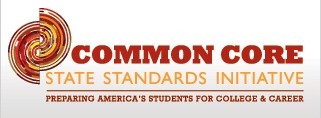 Your new post is loading...
 Your new post is loading...

|
Scooped by
Mel Riddile
|
Best selling author Seth Godin discusses the failure of our educational model that's built around producing factory workers.

|
Scooped by
Mel Riddile
|
When you place reasonable people in unreasonable circumstances, they sometimes behave unreasonably. In this case, California schools are being closed, teachers are being fired, and principals are being transferred or terminated on the basis of state test scores. The problem is that California forgot to hold students accountable for test results. These tests don't matter for the students. So, some students simply "Christmas Tree" http://bit.ly/a7Ujmb tests, and thus, the careers of professional educators rest on the good will of students. Mel Riddile A color-coded ID system sounds extreme! "Anaheim Union High School District (CA) on Thursday killed a controversial incentive program that assigned students color-coded ID cards and planners based on state test scores, required those who performed poorly to stand in a separate lunch line and awarded the others with discounts. "The program... was designed to urge students to raise scores on the California Standards Tests, but it also raised concern among parents and students who said it illegally revealed test scores and embarrassed those who didn't do well."
"I was hoping that this would be the outcome, that they would see confidentiality is important for the students...
"Having perks for doing well on a test is a great idea. I think they should be reinforced for doing well on a test. They just went about it all wrong. I'm hoping that they've learned from this."
The Anaheim statement says the district will continue to offer incentives for stellar performances, and is exploring options for doing so.
"Because we believe having incentives can appropriately motivate students, we will develop another system for them to access the incentives. This is similar to acknowledging students for their participation in athletics, performing arts, extra-curricular activities, and community involvement," the statement reads."
Color-coding criteria
At the beginning of the school year, Kennedy and Cypress high school students received one of three color-coded ID cards, based on performance on the California Standards Tests. Student scores on these exams fall into one of five categories – advanced, proficient, basic, below basic and far below basic.
Black/platinum cards: Students must score "advanced" in all subject areas tested.
Gold cards: Students must score "proficient" or "advanced" in all subject areas tested. Students with a white card who improve their scores in at least two subject areas by at least one level (i.e. moving from "far below basic" to "below basic") also qualify for a gold card.
White/regular cards: Students who don't score "proficient" or above in all tested subject areas receive a white card. This category includes those who score "far below basic," "below basic" and "basic" in all subject areas. But it also can include those who score "basic" or below in just one subject area – unless they have met the improvement criteria necessary to receive a gold card."
more...

|
Scooped by
Mel Riddile
|
"Feedback is the breakfast of champions."--Ken Blanchard No leader improves without feedback. But getting people to be honest about your performance isn't always easy. Give your team a way to supply you with the candid information you need to change by asking them these three questions:
1. What should I stop doing? Ask which behaviors stand in your way of success.
2. What should I keep doing? Inquire about what you do right, and should continue to do.
3. What should I start doing? Once you've stopped unproductive behaviors, you'll have more time and energy for new behaviors.
Today's Management Tip was adapted from "Three Questions for Effective Feedback" by Thomas J. DeLong.

|
Scooped by
Mel Riddile
|
"A man should never be appointed to a managerial position if his vision focuses on people’s weaknesses rather than on their strengths. The man who always knows what people cannot do, but never sees what they can do, will undermine the spirit of organization"--Peter Drucker John Zenger, co-author of the HBR article, Making Yourself Indispensible, told me that strengthening strengths is like pushing a wheel while it’s going downhill.

|
Scooped by
Mel Riddile
|
"We can’t improve the quality of our nation’s educators or teacher training programs without a serious dialogue around what good teaching looks like, especially for the most at-risk students for whom excellent teaching is most vital. Further, policies must be structured in ways that tease out the attributes and skills of excellent educators and identify and develop these in less effective teachers. The truism that good teaching can’t be quantified — that you “just know it when you see it” — is anything but true. These new systems may not be perfect, but they are worlds better than what we had previously. And they are a starting point if we want to finally get serious about improving teacher quality. - Jamie Davies O’Leary

|
Scooped by
Mel Riddile
|
Our current national obsession or "silver bullet de jour" is evaluation; specifically teacher and principal evaluation. Let us be clear. The motivation behind this obsession is about developing a system designed to get rid of ten percent of the "worst teachers." This is not about improving teacher quality, but it should be. Truth be told, we currently have and have had many high-quality teacher evaluation systems. What we don't have is a high-quality capacity-building system. We don't do a good job of developing teacher capacity. Inspection will not improve quality in any profession. Standing at the end of the assembly line with a clipboard noting defects will not improve quality. Evaluating teachers with a "better checklist" will not, in and of itself, improve instruction. A system founded on inspection will only serve to drive teachers from the profession and deter new teachers from entering. Who would want to work in a system set up to determine who passes inspection and who does not? This sounds more like a state vehicle inspection program than it does an education initiative. The Pledge More: http://bit.ly/oXQNk5

|
Scooped by
Mel Riddile
|
Advanced data systems are making it possible for researchers to conduct high-quality, randomized controlled trials, studies at a fraction of the previous costs. "Randomized controlled trials in education are studies that randomly assign a sample of students, teachers, or schools to a group that participates in the program ("the program group") or to a group that does not ("the control group"). With a sufficiently large sample, this process helps ensure that the two groups are equivalent, so that any difference in their outcomes over time - such as student achievement - can be attributed to the program, and not to other factors. In recent years, federal and state policy, as well as improvements in information technology, have greatly increased the availability of high-quality administrative data on student achievement and other key educational outcomes. Thus, it has become more feasible than ever before to conduct gold-standard randomized evaluations on a shoestring budget. Equipped with reliable evidence, education officials can have much greater confidence that their spending decisions will produce important improvements in student outcomes."

|
Scooped by
Mel Riddile
|
Arriving at yearly goals for a Pennsylvania school district may be an exercise like few others in understanding a wide array of local factors and current trends, best past practices and future commitments or even visions with a complex overlay of state and federal mandates that all or in part may shift from time to time, somewhat like tectonic plates grinding away under the earth’s surface. Director of curriculum, instruction staff development and planning Richard Gusick explained after last week’s board meeting that T/E’s yearly plan is based on the district’s strategic plan, rewritten every six years, but also on programming initiatives, as well as input from parents, teachers and advisory councils. State and federal mandates also play a very essential part. The goal statement is drafted annually by administrators within a “fiscally responsible framework,” according to Gusick, with Waters coordinating the final document. From the No Child Left Behind Act with “each state allowed its own standards,” Gusick said, “has emerged a common core, [with] around 44 states including Pennsylvania participating.” The Common Core Standards in Language Arts and Math have created “some differences of emphasis and form, [and] some questions of alignment [a subject taught in second grade might now be moved to third].” How much adjustment, Gusick said, is something “we’re still studying.” And Keystone Exams – Gusick said that the moratorium in place for 2011-12 might be lifted to see four of the exams resumed in 2012-13.

|
Scooped by
Mel Riddile
|
Now being used exclusively in kindergarten and first grade and some second-grade classes, Mongtomery County (MD) school officials bill Curriculum 2.0 as a way to teach critical thinking and problem-solving skills. It stresses the mastery of material as opposed to the quantity studied, and it integrates more subjects, such as science and social studies, into lesson plans for math and English.

|
Scooped by
Mel Riddile
|
A visual history of the evolution of classroom technololgy. "Classrooms have come a long way. There’s been an exponential growth in educational technology advancement over the past few years. From overhead projectors to iPads, it’s important to understand not only what’s coming next but also where it all started."

|
Scooped by
Mel Riddile
|
It's not every day that a school's homecoming queen accepts her award in a football uniform. Brianna Amat isn't most girls. Amat, an 18-year-old senior at Pinckney Community High School (Mich.), was named homecoming queen of her school this past Friday night. The only catch? She's also the kicker for the high school football team.

|
Scooped by
Mel Riddile
|
A substantial percentage of TFA teachers — 43.6% — remained in their initial, low-income placement school beyond their two-year obligation. "Proposing to expand its teaching corps from 7,300 to 13,000 over the next five years, TFA recently won $50 million in the federal i3 (Investing in Innovation) competition and succeeded in raising $10 million in matching funds." "Proponents vigorously cite the program’s merits, contending that TFA attracts academically strong and motivated young people who would otherwise not consider teaching, especially in high-poverty schools." "Its detractors, with equal passion, argue that by requiring only a two-year commitment from corps members who have received only five weeks of formal preparation, TFA undermines efforts to stabilize and improve staffing in the very schools most overwhelmed by teacher turnover and most in need of consistency in the classroom. Moreover, critics argue that TFA compromises teaching as a profession by minimizing the importance of preservice preparation and casting teaching as a prelude to the higher-status careers that many corps members enter after their TFA experience. Some cynically assert that the program functions primarily as a résumé booster for ambitious upper-middle-class college graduates, intent on fashioning the most compelling application to the nation’s top law or medical schools." Our large-scale, nationwide analysis of TFA teacher turnover presents a more detailed picture of which TFAers stay, which ones leave the profession and some suggestions about why they leave. In our study, we learned:
- Nearly two-thirds (60.5%) of TFA teachers continue as public school teachers beyond their two-year commitment.
- More than half (56.4%) leave their initial placements in low-income schools after two years, but 43.6% stay longer.
- By their fifth year, 14.8% continue to teach in the same low-income schools to which they were originally assigned. "Our findings suggest two explanations for how long TFA teachers stay in the profession and in their placement schools. The first involves their initial intentions and their background in education before entering TFA; the second is the working conditions in their schools." When asked to select the most influential factor in their decision to leave teaching, the top reasons selected were:
- To pursue a position other than K-12 teacher (34.93%);
- To take courses to improve career opportunities in education (11.79%); or
- To take courses to improve career opportunities outside of education (10.26%).

|
Scooped by
Mel Riddile
|
When I read a recent article entitled Can Technology Fix Education, I didn't know whether to laugh or cry. I could tell from the article that the authors never set foot in a school and had no idea of the current context in which schools operate. The following are key points made by the authors and my comments: - Why not harness the "power and popularity" to boost student achievement? School leaders would love to provide each student with his or her own computing device. However, we don't have the money and we have not had the money in the last twenty-five years to do so.
- Schools are currently restricting the use of (personally owned) devices because they are considered to be a distraction. Until we go one-to-one, we are merely playing or dabbling around the edges of technology integration. And don't give me the line about giving every student an iPod. iPods and iPhones are band-aids and a poor man's replacement for real learning technology. Sure, I use my iPad and iPhone to send emails, but neither is my primary device and neither is it the primary computing device for the authors. Can you imagine going to work for a company and being shown your desk and given nothing but a phone? More: http://bit.ly/oUtNXp
|

|
Scooped by
Mel Riddile
|
Five Tips to Help Principals Prevent Bullying "Blogger Anne O'Brien shares valuable bully prevention tips for teachers, parents, and principals."
According to Dillon, effectively addressing a bullying problem requires a culture change. A true culture change takes time, but a few key steps to help principals get started:
Practice What You Preach Don't use your status as the school leader as the lever for change; instead, "listen before talking and reflect before acting" to ensure your staff feel valued (this is backed up by the NEA survey, which found an important predictor of adult willingness to intervene in bullying was their "connectedness" to the school, defined as their belief they are valued as individuals and professionals in the learning process).
Assess the Extent of the Problem
Survey students, staff and parents to find out how much and what type of bullying is going, as well as where and when, to target prevention efforts. Develop a School-wide Code of Conduct ...that reinforces school values and clearly defines unacceptable behavior and consequences. Empower bystanders -- teachers and especially students -- to help enforce it by training them to identify and respond to inappropriate behavior.
Increase Adult Supervision
Most bullying happens when adults are not present, so make sure they are "visible and vigilant" in hallways, stairwells, cafeterias and locker rooms, as well as on buses and the way to and from school for students who walk.
Conduct Bullying Prevention Activities
...such as all-school assemblies, communications campaigns or creative arts contests highlighting school values to bring the community together and reinforce the message that bullying is wrong. Small Acts Lead to Big Changes - regularly greeting students - talking to students - addressing students by name ....help students feel connected." (These tips were adapted from articles by James Dillon from Principal magazine, Sept/Oct 2010 and Ted Feinberg from Principal Leadership, Sept. 2003.)

|
Scooped by
Mel Riddile
|
Student Voice is an important part of the "visible" school culture, one that needs to be cultivated and grown. Just as teachers should have direct input in the decisions that impact them on a daily basis, so too should students have a say-so in those aspects of school life that they hold most important. ---- Motivating Governor Mifflin students to make a difference! “You matter!” was the message each student at the Governor Mifflin Junior and Senior High received at a special high-energy assembly last on Tuesday and Wednesday. Impressed by a presentation she saw at a conference, Student Government Association advisor Nancy Brady decided to bring the motivational program called Every Monday Matters to Governor Mifflin students. The program is based on the book Every Monday Matters: 52 Ways to Make a Difference, written by Matthew Emerzian and Kelly Bozza. “Our kids need to hear this message. They get overwhelmed and they need to know they can make a difference with little things,” Brady said. She added that it is a good message for everyone, not just leaders. The Governor Mifflin Student Council and the SGA sponsored the event. According to presenter Toni Lamb, the purpose of the program is to promote self and social responsibility and spread the message that “you matter.” Its goal is to empower each student and show them that ordinary people can do extraordinary things. More...

|
Scooped by
Mel Riddile
|
In the decade since school districts instituted "zero tolerance" discipline policies, administrators have increasingly suspended minority students, predominantly for nonviolent offenses, according to a report released Wednesday. "The National Education Policy Center found that suspensions across the country are increasing for offenses such as dress code and cellphone violations. Researchers expressed concerns that the overuse of suspensions could lead to dropouts and even incarceration. Suspensions are falling mostly on black students; nearly a third of black males in middle school have been suspended at least once, researchers from the University of Colorado-based group found."

|
Scooped by
Mel Riddile
|
Third grade a turning point in how kids solve math problems... "Neuroscientists have confirmed what any kid knows: Third grade changes everything. Compared to kids just out of second grade, recent third-grade graduates use their brains in an entirely different way when solving math problems, a study in an upcoming NeuroImage finds."

|
Scooped by
Mel Riddile
|
Do you have a "growth mindset?" Or a "fixed mindset?" Here are three questions to ask ourselves to help us grasp the difference. During my term as superintendent of the U.S. Naval Academy, I enjoyed dropping in on classes from time to time to learn from our world-class faculty and to chat with students. Whenever I asked, "How many of you want to be leaders?" everyone in the room instantly raised their hands. A few years later, as an administrator at a large state university, I frequently asked students the same question. But usually fewer than half of those in the room put up their hands. What explains the difference? Talent wasn't the issue. Both institutions are blessed with bright, hard-working young men and women. Nor was instruction a problem. Both institutions employ top-notch faculty. The difference, I'm convinced, was rooted in mindset.

|
Scooped by
Mel Riddile
|
'What you should tweet about: 1. Sharing innovative strategies and news from your schools.
2. Educational articles that influence your thinking.
3. Thoughts and quotes.
4. Questions that will help you or your organization.
5. Support others educators.
6. Some personal information. '

|
Scooped by
Mel Riddile
|
As states raise graduation requirements, high schools are forced to re-think their schedules. This HS has six-period schedule and state requires 24 credits for graduation. There is absolutely no margin for error. "The three options that surfaced in July would increase the number of classes that could be taken during the school year, thereby earning more than the 24 credits encompassed in the traditional six-period school day. Georgia requires 24 credits to graduate. The three proposals in the survey included a trimester schedule, a seven-period schedule or a seven-period hybrid. The trimester schedule would include five classes in each of three semesters in the school year and provide the ability for students to earn up to 30 credits. The seven-period day would allow students to earn 28 credits, as would the seven-period hybrid. The difference in the two is that students under the hybrid schedule would have seven classes on Mondays, Thursdays and Fridays and four classes of 90 minutes each on Tuesdays and Wednesdays.

|
Scooped by
Mel Riddile
|
“Be a thermostat and not a thermometer... I began my checkered career as a nursery school teacher. One of the many valuable tools I learned there is the importance of keeping my equilibrium when coping with a small person hell bent on having a temper tantrum. Three tools I’ve also found super-helpful to being a thermostat are: 1. Regardless of their age, most people just want to know they have your attention. Given this, I’ve found repeating, “I’m listening.” And “Tell me more,” is helpful.
2. When you can get a word in edgewise, inhale then speak on an exhalation. This will both calm you down and give your voice resonance and authority.
3. When the other person is calm enough, offer him or her a glass of water (and drink a glass yourself.) The act of drinking forces people to pause, swallow… essentially gets their soul back in their body. Not to mention that sharing this very human activity reminds everybody of their shared humanity.

|
Scooped by
Mel Riddile
|
High School eliminates general English and increases rigor in all English classes. CHAMBERSBURG PA-- For the first time, a general English course is not available at Chambersburg Area Senior High School for students this school year -- a choice made to improve test scores.

|
Scooped by
Mel Riddile
|
"Dr. Jorge Haddock (Dean of George Mason University’s School of Management), deftly explained that change signifies something different in what we are doing, while transformation refers to something new in how we are being." No one changes anything of any significance without the will to do it. Culture: Barrier to Change The Peter Drucker quote, “culture eats strategy for lunch,” came up in a couple of different contexts at the conference as a way of naming exactly this: all the best strategy in the world will come to nil if the culture is not in alignment with it. Throughout the conference, I heard culture as the main barrier to implementing real change. So what’s to be done in the face of the big “it’s just the way we are” or “that’s how we do it here”? The inertia of the old cow path? That’s where the “management” part of the conference name comes in. By definition, if we are managing something, we know what we are doing and are making sure it happens. But in large-scale change, in areas where we need transformation, we don’t know. That’s the whole point. We aren’t ready yet to turn things over to managers; what we need is leadership. As Dr. Haddock said, we need leaders who listen for the culture, for the context of an issue and help people hear the stories they tell themselves that are no longer useful. Not more information, more content on the issue, but more attentiveness to its context. And to the process by which people can come together, develop shared understanding predicated on shared language, transform their understanding at a cellular level, see something new, bigger than they have before, all of which enables doing something brilliant. As our issues grow in number, complexity and scope – in our organizations, our communities and our world, and the pace of change continues to increase, it is leadership of transformation that will pave the way for successful management of change.

|
Scooped by
Mel Riddile
|
Background: "Carol Dweck is a professor of psychology at Stanford University and author of “Mindset: The New Psychology of Success.” Dweck has conducted extensive research on how a mindset can affect a person’s behavior and method of learning. "How leaders can change mindsets to become more innovative:
People have different mindsets that affect their abilities to grow in their jobs, offer innovative ideas and become better at what they do, says Carol Dweck, author of "Mindset: The New Psychology of Success." She suggests that managers can spur workers with a "fixed mindset" to move into the more innovative "growth mindset" -- for example, by mentoring workers and encouraging new ideas."

|
Scooped by
Mel Riddile
|
"...it’s not just budget cuts, but also the emotional impact of those cuts — and of prolonged economic hardship in general — that’s affecting how schools buy and integrate technology." "As the PTO co-president from tech-rich, budget-embattled Kyrene recently put it in the New York Times article, “You don’t go buy a new outfit when you don’t have enough dinner to eat.” This is recession psychology, and it has a powerful hold on the way we will fund technology in education going forward."
|
 Your new post is loading...
Your new post is loading...
 Your new post is loading...
Your new post is loading...































